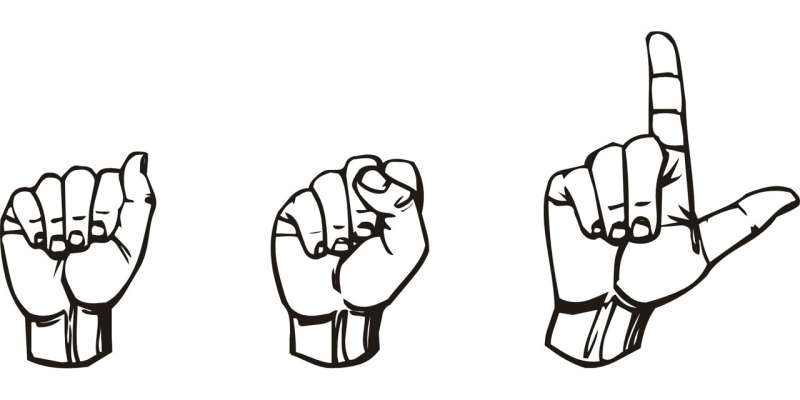Sign languages change, too: The evolution of SELF in American Sign Language

A new study shows that American Sign Language (ASL) is more linguistically complex than previously understood. In particular, research appearing in the June 2022 issue of the journal Language, authored by Tory Sampson (UC San Diego) and Rachel Mayberry (UC San Diego), documents the emergence of the copula—a word meaning to be (e.g. is, was, are, were)—in ASL, something that has been overlooked in previous linguistic analyses.
In English, copulas serve to connect the subject of a sentence with an adjective or noun that describes it. Some languages do not always require a copula, including some dialects of English, and ASL had previously been thought to be such a language. According to this study, a copula does exist in ASL, and takes the form of the sign termed "SELF." The authors found that SELF was predominantly used to express that two individuals are the same entity, as in "Diana Prince is Wonder Woman," and to express group membership, as in "Maria is deaf," in which Maria is understood to be a member of the set of deaf people. However, when asking an ASL signer what SELF means, they typically give a definition similar to the English himself, herself, themself, as used in sentences like "She likes herself" or "Only the doctor himself can operate." This conflicts with the frequent appearance of SELF as a copula.
To resolve this discrepancy, Sampson and Mayberry (2022) pioneered a novel historical linguistics approach, drawing upon the Historical Sign Language DataBase, which contains historical records of ASL and its predecessor, French Sign Language (LSF). They extracted hundreds of uses of SELF from LSF dictionary entries dating to the 1860's, Old ASL black and white films dating to the 1910s, and social media videos of modern ASL dating to the early 21st century. The authors were able to track the evolution of SELF through history, revealing a pattern termed the "copula cycle" that encompassed 150 years and continues today. In this cycle, which has been observed in spoken languages such as Hebrew, Finnish, and Mandarin, a word undergoes a series of meaning changes to eventually become a copula. This finding contradicted prior assumptions that there is no copula in ASL, and showed that copula use in ASL is more linguistically diverse than previously thought. The study also showed that the evolution of sign language grammar extends well beyond the initial formation once a deaf community becomes established, as seen in Nicaraguan Sign Language. Rather, sign languages are subject to the same linguistic processes that drive language change in spoken languages.
More information: Click the link to read Tory Sampson and Rachel I. Mayberry, An Emerging Self: The Copula Cycle In American Sign Language, Language (2022).
Journal information: Language
Provided by Linguistic Society of America




















